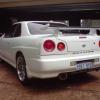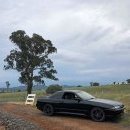Spark Plugs
Announcements
-
Similar Content
-
Latest Posts
-
Yep will do, thanks for all the help.
-
By itsforandres · Posted
@dbm7 and @GTSBoy thank you both very much! will give that a shot! -
By Murray_Calavera · Posted
Sounds good. Provided the panel is flat/level I'd be happy to start the painting process. While you are learning, for sure you could do this. Its only paint, you can always sand it all back and start again. Its only your time and money on materials, but while you're learning, really its time and money spent on your education. Once you know how to do this bodywork and painting, you won't want to waste your time and money on frivolous activities lol. -
Yep I will use a guide coat after putting filler, I will do it on the whole panel as I'm a beginner so chances I've made quite a few errors. In that photo, I think that was a low spot, I just for example said to pretend it's flat but I will put filler + guide coat after to assess where I'm at. Yep with that picture, the panel is wet as it rained when I took the photo. But all those scratches are completely smooth, I went over it with 240 grit and can't feel it, even with my nail digging into it. I was legit thinking to buy a 2k can and spray primer to see how it turns out but then thought to myself it's going to be a mess doing it haha. Good mention there. Thanks for all that info I think I know what to do next.
-
By Murray_Calavera · Posted
Prior to laying down the primer, you need to make sure the surface is completely level. For example, based on this picture, I strongly suspect that the areas marked in blue are higher then the area marked in green. If you spray primer over this entire area, then paint and clear it, the finished result will 100% show the low area. It will stick out like dogs balls. Unfortunately the paint won't magically level out the low areas as you lay it down. Without seeing it in person, I expect that the green area will need to be filled, then use a guide coat and check that the entire repair area is level with a large sanding block. With this picture, are you saying that even though you can see the scratches, the panel is in fact completely smooth and flat? If this is the case sure you could prep and paint it as it is. The picture with the paint you described as blistering, it's hard for me to comment on from the photo alone. It looks like the panel is wet? Dunno, looks strange. Does the panel feel as smooth as glass when you run your hand over it? **** Going back to your question again, generally you would only sand the primer if you made a mistake while laying down the primer. If the panel is prepped properly and you lay the primer down properly, you should not need to sand the primer. This wouldn't work - Don't prep the panel. Spray primer and see how it turns out. Sand the areas where the issues appear. Spray more primer and see how it turns out. Sand the areas....... Yeah you'd go round and round in circles getting no where.
-





Recommended Posts
Create an account or sign in to comment
You need to be a member in order to leave a comment
Create an account
Sign up for a new account in our community. It's easy!
Register a new accountSign in
Already have an account? Sign in here.
Sign In Now